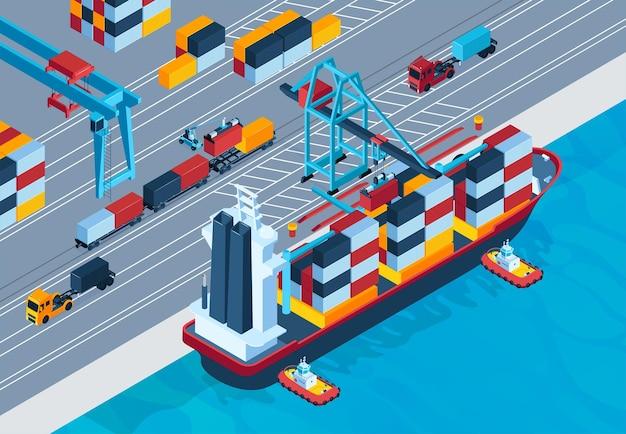Did you know that the Strait of Malacca, located between the Malay Peninsula and the Indonesian island of Sumatra, is one of the busiest sea routes in the world? Its strategic geographical location has made it a crucial passage for international trade for centuries.
In this blog post, we will explore why the Strait of Malacca has played a significant role in global commerce and why it continues to be a vital trade route to this day. We will also uncover the historical significance of the city of Malacca, whose success was intrinsically linked to its proximity to the strait. So, join us as we delve into the fascinating world of trade, exploration, and cultural exchange in the eastern part of the Indian Ocean trade.

Why the Strait of Malacca Paved the Way for Trade Opportunities
The Strait of Malacca, located between the Malay Peninsula and the Indonesian island of Sumatra, has played a crucial role in shaping the history of trade. This narrow waterway has witnessed countless ships sailing through its crystal-clear waters, carrying valuable goods and cultural exchanges. But what made the Strait of Malacca so important to trade? Let’s dive into its captivating history and discover why it held a prominent place in the world of commerce.
A Strategic Crossroad for Trade Routes
With its strategic location, the Strait of Malacca became the meeting point for major trading routes connecting the Indian Ocean and the South China Sea. It served as a crucial link between the East and West, enabling merchants to navigate their way through various corners of the world. As ships sailed along the Malacca Strait, they could easily access ports in India, China, and beyond, making it a hotbed of economic activity.
Abundance of Valuable Resources
The region surrounding the Strait of Malacca boasts a rich abundance of natural resources, enticing merchants to venture into its depths in search of unparalleled trade opportunities. Spices, such as cloves, cinnamon, and nutmeg, were among the most prized commodities in ancient times. These aromatic treasures found their way from the Spice Islands (modern-day Indonesia) through the Strait of Malacca, captivating the palates of people across the globe.
Melting Pot of Cultures and Ideas
As traders from diverse lands converged upon the Strait of Malacca, it became a vibrant melting pot of cultures and ideas. The bustling ports along its shores welcomed people from China, India, the Middle East, and Europe, fostering a dynamic exchange of goods, knowledge, and technologies. From the intricacies of Chinese porcelain to the exquisite textiles of India, the Strait of Malacca became a treasure trove of cultural discoveries.
Empires Competed for Control
The importance of the Strait of Malacca did not go unnoticed by powerful empires of the time. Various maritime powers, including the Portuguese, Dutch, and British, vied for control of this strategic waterway, seeking to monopolize the lucrative spice trade and strengthen their influence in the region. This fierce competition gave rise to centuries of conflict, further highlighting the undeniable significance of the Strait of Malacca to global commerce.
A Passage of Perils and Profits
As trade flourished along the Strait of Malacca, so did the challenges faced by seafarers. The narrowness of the strait, coupled with unpredictable tides and treacherous currents, posed significant risks to ships making their way through this maritime passage. The presence of pirates lurking in the shadows added an extra layer of danger. However, the potential profits that awaited those who successfully navigated these perils made the journey more than worthwhile.
The Modern Significance
Even in the modern era, the importance of the Strait of Malacca remains undeniable. This strategic waterway continues to facilitate the flow of international trade, serving as a crucial transit route for goods passing between Asia, Europe, and the Americas. With the increasing expansion of global trade, the Strait of Malacca retains its position as a vital artery for commerce and a testament to the enduring legacy of the relentless merchants who embarked on its waters.
In conclusion, the Strait of Malacca’s importance to trade is rooted in its strategic location, abundant resources, cultural richness, and historical significance. This narrow passage has witnessed the rise and fall of empires, the exchange of diverse goods and ideas, and the triumphs and tribulations of intrepid sailors. It was and continues to be a gateway to prosperity, a conduit connecting nations and fueling economies. The legacy of the Strait of Malacca stands as a testament to the indomitable spirit of human ambition and the enduring impact of the pursuit of trade.

FAQ: Answers to Your Burning Questions about the Importance of the Strait of Malacca in Trade
Which is the busiest sea route in India
The busiest sea route in India is none other than the famous Strait of Malacca! This maritime passage connects the Indian Ocean to the vibrant South China Sea, making it a crucial gateway for trade between East and West. It’s like the Grand Central Station for ships, bustling with vessels from all corners of the globe, eagerly navigating the waters.
Is Melaka the same as Malacca
Yes, indeed! Melaka, also known as Malacca, refers to the same enchanting city that sits proudly on the banks of the Strait of Malacca. So whether you prefer Melaka with a “k” or Malacca with a “c,” rest assured, we’re talking about the same fantastic place!
Why was the Strait of Malacca important for trade
Ah, the Strait of Malacca, a trade aficionado’s dream come true! Back in the day, this narrow passage was like hitting the jackpot for merchants and explorers alike. It provided a vital link between the Indian Ocean and the rest of the world, serving as a key trade route for centuries. Its strategic location nestled between the bustling markets of China, India, and Europe turned it into a bustling hub of commerce. It was like the world’s biggest shopping mall, without the catchy jingles and food courts.
How did Malacca become so successful
Oh, let me tell you a tale of Malacca’s rise to fame and glory! It all started with a vision. Malacca emerged as a regional powerhouse under the rule of its visionary sultan, Parameswara. This mighty port city flourished due to its strategic location, attracting traders from across the globe who were eager to buy and sell everything from spices to silks. With their impeccable entrepreneurial skills and a bustling port, Malacca quickly became the center of the trading universe. It was like the ultimate trading hotspot, where fortunes were made and lost faster than a rabbit in a Formula One race.
How would you describe Melaka
Imagine walking through the pages of a history book, sprinkled with a touch of tropical charm, and you’ll find yourself in Melaka. This UNESCO World Heritage Site offers visitors the chance to step back in time and explore the remnants of its rich historical tapestry. From beautifully preserved colonial architecture to vibrant street art and mouthwatering local cuisine, Melaka effortlessly blends the old with the new. It’s like a cultural and historical treasure chest waiting to be discovered.
Is Melaka worth visiting
Absolutely! A trip to Melaka is like discovering a hidden gem buried beneath layers of history. This captivating city offers a delightful blend of cultural immersion and mouthwatering culinary experiences. Wander through the vibrant Jonker Street, indulge in Nyonya cuisine, visit the iconic Stadthuys, and embrace the charm of the Cheng Hoon Teng Temple. Whether you’re a history buff, a foodie, or simply seeking a memorable adventure, Melaka has something for everyone.
What is the busiest sea lane in the world
Prepare to have your mind blown, my friend, because the Strait of Malacca takes the crown as the busiest sea lane in the whole wide world! Picture a bustling highway, but instead of cars, you’ve got gigantic cargo ships and majestic vessels sailing through the azure waters. With over 94,000 ships gliding through its waters every year, the Strait of Malacca puts even the busiest of city streets to shame. It’s a maritime symphony of trade, showcasing the unstoppable flow of global commerce.
Why was Malacca important in the eastern part of the Indian Ocean trade
Ah, Malacca—the jewel in the crown of the eastern part of the Indian Ocean trade. This bustling trading city grew in importance due to its strategic location along the Malacca Strait. Acting as a gateway between bustling China and the abundant Indian Ocean, Malacca became the go-to destination for merchants seeking to exchange goods, cultures, and ideas. It was like a bustling marketplace where global connections were forged, fortunes were made, and spices were traded faster than a grand prix pit stop.
Why should we visit Melaka
Oh, dear traveler, where do I begin? Melaka beckons with open arms, inviting you to embark on an unforgettable journey through time and culture. Step into a city that breathes history and let its captivating heritage buildings, vibrant street art, and delectable cuisine weave their magic. Lose yourself in Melaka’s rich tapestry, where Dutch, Portuguese, and British influences dance together in perfect harmony. Unravel the secrets of its past, immerse yourself in its vibrant present, and create memories that will last a lifetime. Trust me, Melaka is a treasure trove of experiences waiting to be discovered, and you wouldn’t want to miss it for the world!
Now that you’re armed with answers to these burning questions, get ready to set sail into a world of trade, history, and cultural wonders. The Strait of Malacca and the captivating city of Melaka await your arrival, ready to whisk you away on an adventure like no other!
